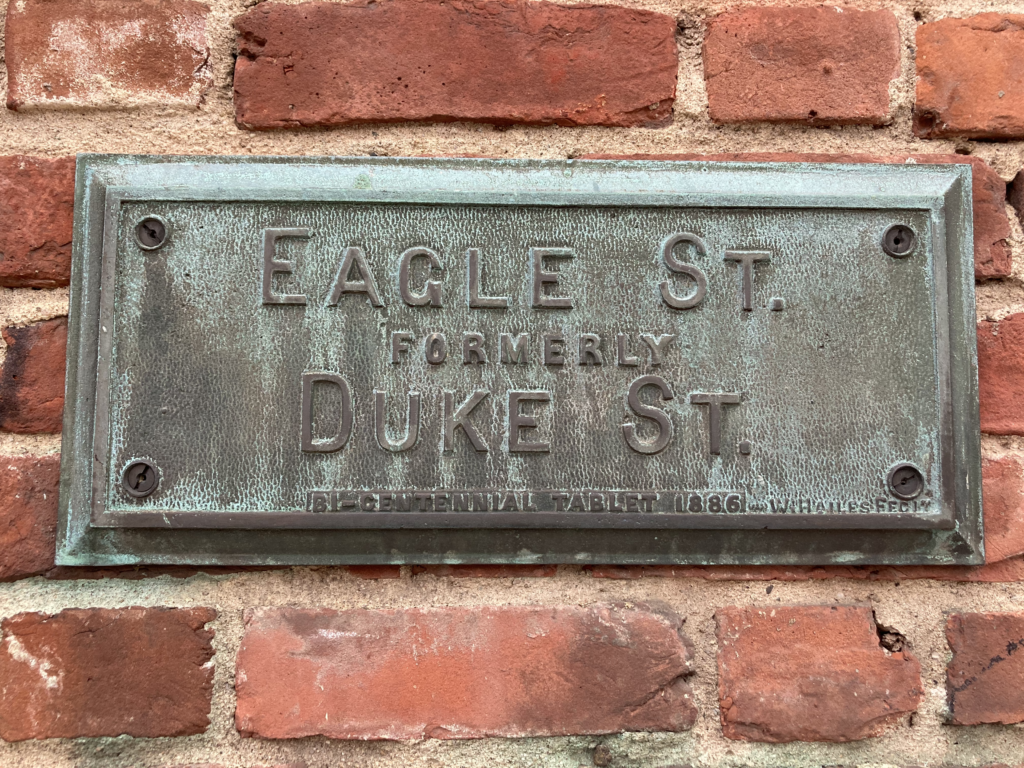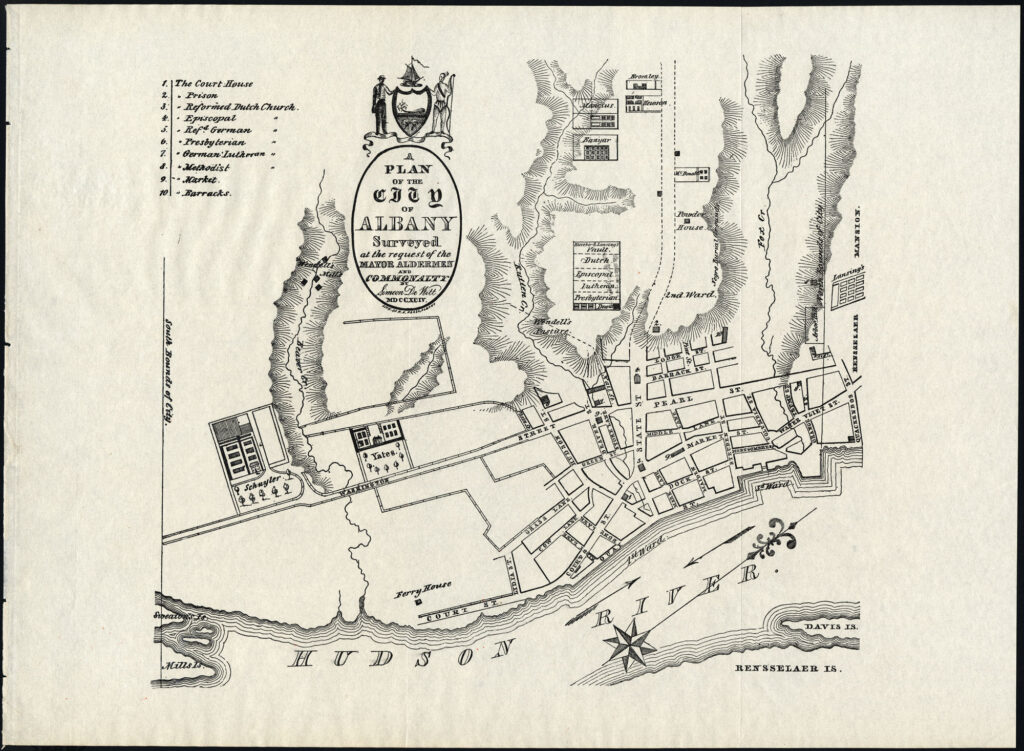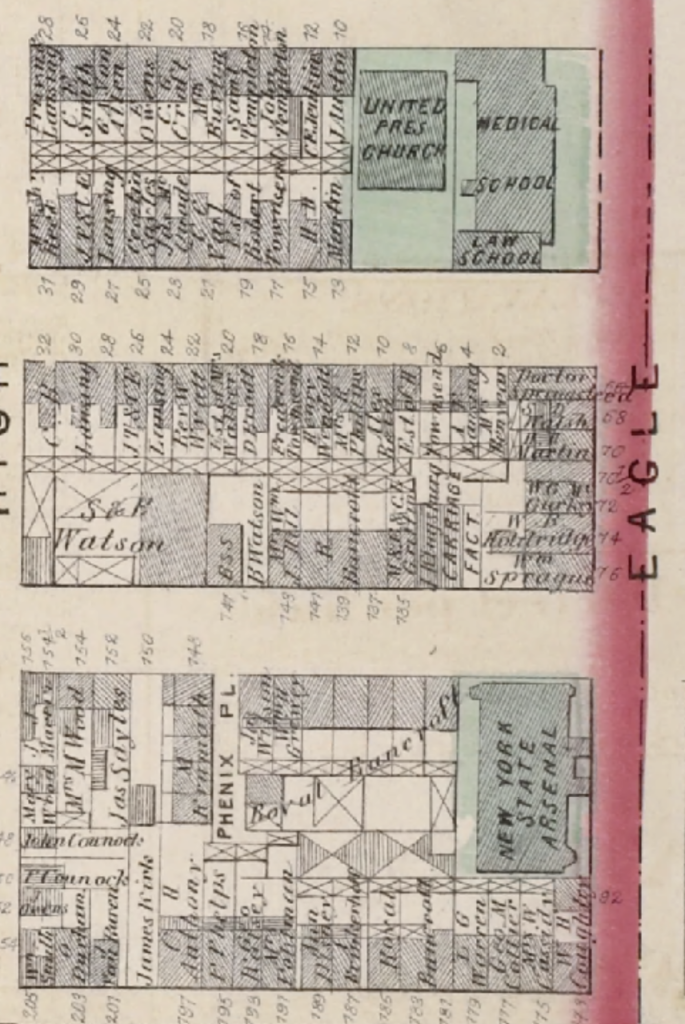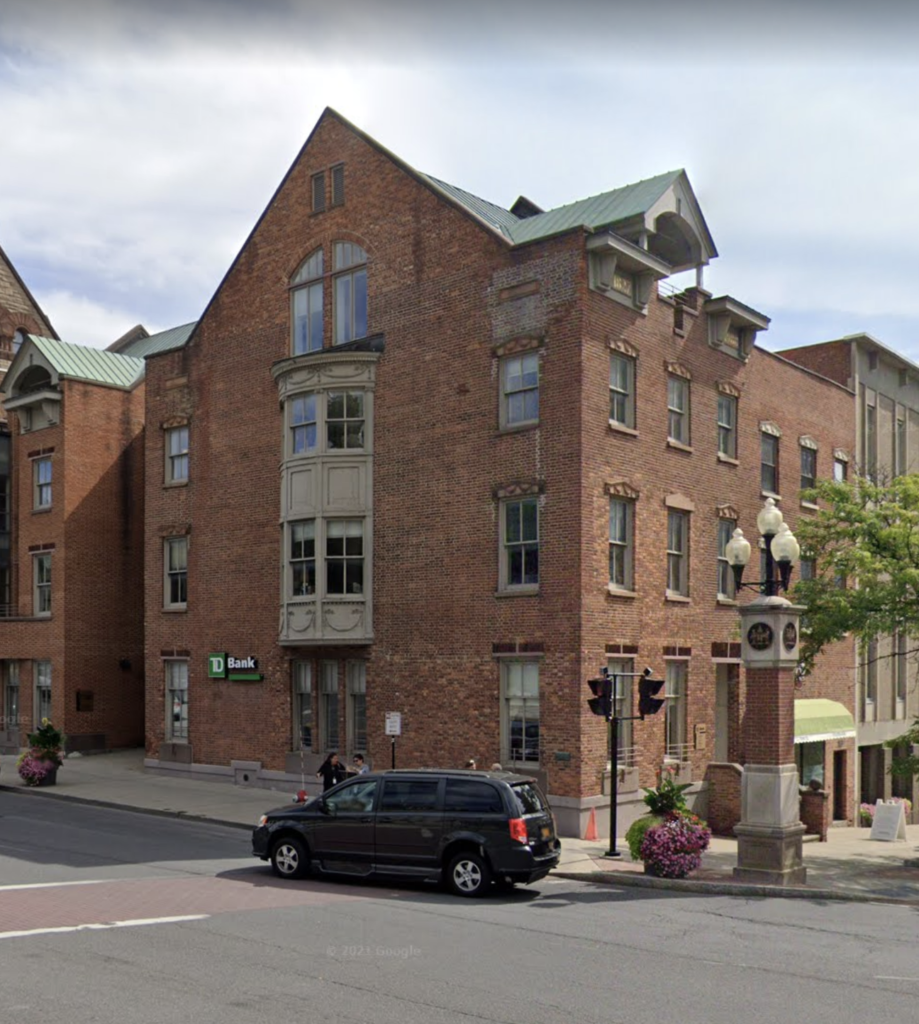For the 37th Bicentennial tablet, it’s rather remarkable that it still exists – given that much of the street it commemorates was annihilated for the construction of the Empire State Plaza.
Tablet No. 37—Eagle Street.
Bronze tablet, 7×16 inches, on corner building State and Eagle streets. Inscription:
“Eagle Street, formerly Duke Street.”

In Albany’s earliest days, and for a very long time, Eagle Street was essentially the western boundary of the city. In fact, when Fort Frederick was in place, it was beyond that boundary. In two engravings made from surveys by Simeon DeWitt in 1794, one doesn’t show Eagle Street or anything beyond to the west; the other shows a full street grid that was clearly aspirational at that point. But it was named Eagle Street at that point. Stefan Bielinski reported it was originally named Queen Street; the Bicentennial Committee said it was once Duke Street. George Rogers Howell reported that the change from Duke to Eagle was made in 1790, when many previous surnames (often former British heroes from the French and Indian Wars) and others were changed to bird names.

One could be forgiven for thinking there’s hardly anything of note on Eagle Street – that’s true today, as nearly all of the buildings between the Capitol and the Cathedral were demolished in the construction of the Empire State Plaza, and the course of Eagle Street itself was changed. No, it didn’t originally bend down a gully – that was done to route it under the plaza expressway, the ramps that lead into and out of the plaza parking levels. When the Bicentennial Committee chose to mark it, it was as busy as any street in Albany. The Albany Hospital was located at the southeast corner with Howard Street. The Congregational Church was a block below, at Beaver. Below that, at Hudson, was the coal yard of George Hoyt. On the west side, between State and Lancaster was a row of private houses. The Albany Medical College and Albany Law School were between Lancaster and Jay; more houses and then the New York State Armory below Hudson. Decades later came the Eagle Hotel, at the corner of Eagle and Daniel. All of that is just gone – a marker remains showing the location of the medical college.

The Armory later became the home of the Catholic Union, founded in 1887. The main floor of the building was converted into the 1000-seat Eagle Theatre in 1926, just before the advent of sound films; it didn’t convert to sound until 1929, a little behind the curve. Well-loved and remembered in the neighborhood, it was never one of the city’s premiere movie houses, and it had closed by the time the State acquired it in 1962. 98Acres covered it here.
The building this marker is on (or was when we took this photo – StreetView shows the building under renovations last July) has housed the TD Bank for quite some time. We wish we could say something about the building the marker is on – it bears dates of 1827 and 1988 on its State Street side – the latter likely reflects some modernization done just after the tricentennial year, but we haven’t found confirmation of what portions of the building may date as far back as 1827. That would make it one of the oldest buildings downtown currently.


Leave a Reply